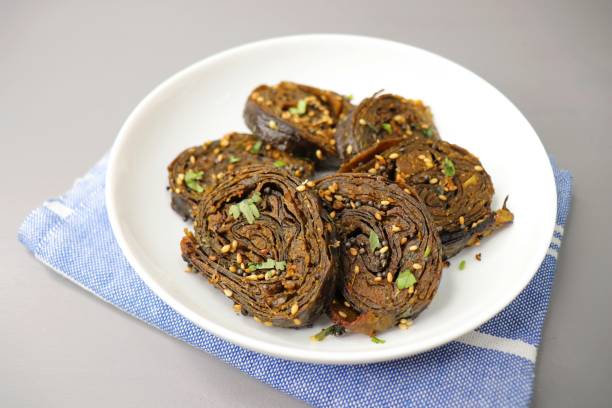
Manipur’s heimang is a versatile ingredient in Asian cuisines and packs a nutritional punch
In September, a plethora of soft white flowers are affixed to this heimang tree ( Rhus chinensis), which are widely spread across Manipur and other states of the northeast.
The blooms are striking among the lush green of a deciduous tree, which is why they are often referred to as the ‘September beauty.’ In November and December, they change into deep red cherries with hairy glands that were utilized for centuries for food and medicinal purposes.
The spherical fruit is characterized by an acidity that is similar to citrus, and even though it’s tiny, it’s full of nutrients, including flavonoids, polyphenols, and antioxidants.
Traditional healers from Manipur, known as maibas or maibis, are the traditional healers of Manipur. Maibas (or maibis prescribe heimang for common digestive issues like dysentery and diarrhea. They recommend drinking water-soaked fruits to treat stomach ulcers and indigestion.
The healers claim that the fruit can be beneficial in treating urinary stones and kidney disease.
Researchers at the Council for Scientific and Industrial Research – Central Food Technology Research Institute at Mysuru, as well as researchers from the Academy of Scientific and Innovative Research in Ghaziabad, confirm this assertion.
Their research, which was done in vitro (experiments using glassware, such as test tubes), indicates that teaming extracts fruit prevent the formation of calcium Oxalate crystals (which create the most prevalent kind of kidney stones) as well as experimentally-induced urinary stones. It was reported in the Journal of Herbal Medicine in October 2021.
Other components of the human tree, such as its leaves (including the galls or abnormal growths on the leaves) and its stem, roots, and bark, can also be found to have therapeutic and preventive effects.
In addition to dysentery and diarrhea, the compounds extracted from these tissues may be used to treat conditions like colon and rectal cancer as well as diabetes mellitus, oral diseases, sepsis, and inflammation, according to an article in the journal of Phytotherapy Research in December 2010.
The plant is rich in chemicals that are good for teeth since it stops enamel from losing minerals, as researchers have noted in their review.
The review paper of 2010 discovers that the compounds that are isolated from the human stem tree are able to inhibit the HIV-1 virus in the laboratory significantly. HIV-1 is among the two types of human immunodeficiency viruses and is the most prevalent.
An August 2018 review of 37 research papers released in the European Journal of Integrative Medicine has also highlighted this advantage. It is believed that teaming extracts could inhibit herpes simplex virus and HIV-1 virus activity, decrease the post-meal rise in blood glucose, reduce cholesterol levels, and guard against genetic material.
The local communities of the state use the heimang leaves to make herbal shampoo, known as Chinghi, by boiling it in rice water. When the leaves cool, the product is then filtered using a muslin fabric. The clear liquid can then be used as a shampoo. It can be kept for up to 3 days.
Researchers from Jiangnan University’s School of Food Science and Technology, Jiangnan University, China, also have tried to discover the medicinal characteristics of the plants. They reported in the March 2019 issue of the journal Industrial Crops and Products that the oil extracted from the seed and fruit is rich in unsaturated fatty acids and phytochemicals. It is an excellent ingredient to include in nutrition and food supplements.
Try it with a little salt or sour.
Manipur is one of the world’s biodiversity-rich regions, known as the Indo-Burma region, which covers the northern part of India as well as aspects of other Southeast Asian countries.
It is no wonder that the history of humans is long of medicinal and culinary use across the world in which the tree is a part. In China, heimang is called yan fu mu; yan means salt in Mandarin.
In the past, in ancient China, Certain communities in China used to include fruit in foods for its salty flavor. It is still being used for the Hani community within the Naban River Watershed National Nature Reserve. Naban River Watershed National Nature Reserve.
The bitter flavor of the fruit is due to the presence of organic acids, such as malic acid citric acid, malic acid, and ascorbic acid, which make it a versatile ingredient. It can be used to flavor foods, such as vegetables, meats, and even desserts.
Traditionally, it is mingled with jaggery in order to make the most nutritious and digestible sweet. It can also be dried and powdered in order to be used as a flavoring. Many make a boil of the fruit, then consume the decoction in herbal tea. To ensure that there is always a supply of the fruit as tea or souring agents, the fresh heimang fruit is dried and kept in a storage facility.
Despite its remarkable range of applications, teaming hasn’t yet seen widespread commercial usage. Certain businesses in India have begun including the fruit in herbal tea bags. Promoting these traditional products can provide income opportunities to communities that have access to the tree.
RECIPES
HEIMANG TEA
Ingredients
Heimang fruits one teaspoon
Tea leaves one teaspoon
The water should be enough for two cups of tea sugar to taste
Method
Boil the water, then mix in the tea leaves and heimang fruit. Sort them out when the mixture is done. It is also possible to mix ginger into the hot water to enhance flavor and medicinal value, as well as some salt. You can add sugar if you like, and the tea is ready to serve.
HEIMANG CHURAN
Ingredients
Heimang Fruit: 100 grams
Sugar: 10 g
Salt to taste
Method
Dry and then powder the human fruit. Smash the sugar, too. Mix the powders and salt. The digestive churan can be served by itself or sprinkled on salads.

